Calcium, an essential mineral renowned for its role in bone health and various physiological processes, is not often associated with electrical conductivity. However, beyond its well-known biological functions, calcium possesses intriguing electrical properties that merit closer examination.
In this article, we delve into the question, “Is calcium conductive?” to unravel the complexities of this versatile element’s electrical conductance. We will explore calcium’s conductivity in its metallic form, its behavior in various compounds and solutions, and its comparison with other well-known electrical conductors.
By gaining a deeper understanding of calcium’s electrical properties, we can appreciate its significance in natural and biological systems, its role in electrical signaling within living organisms, and its practical applications in the world of electrical engineering.
Join us on this exploration of calcium’s electrical conductance, where we shed light on the conductive aspects of this remarkable mineral.
What is Calcium?

Bone Health and Structure
Calcium is synonymous with bone health and for good reason. Almost 99% of the body’s calcium is stored in the bones and teeth. It provides structural support, strength, and rigidity to the skeletal system, ensuring that bones can withstand mechanical stress and resist fractures. Throughout our lives, bone tissue undergoes a continuous process of remodeling, with calcium being deposited and withdrawn from bones as needed to maintain a delicate balance.
Muscle Function
Calcium also plays a pivotal role in muscle function. When nerve signals stimulate muscles, calcium is released from storage sites within muscle cells. This influx of calcium initiates muscle contractions, enabling us to move, walk, run, and perform various physical activities. Proper calcium levels are essential for smooth and coordinated muscle movements.
Nerve Transmission
In addition to its role in muscle function, calcium is crucial for nerve transmission. Nerve cells, or neurons, communicate with each other through electrical signals. When a signal reaches the end of one neuron, it triggers the release of neurotransmitters that cross the gap (synapse) and bind to receptors on the neighboring neuron. This process is dependent on calcium ions, which facilitate the release and reception of neurotransmitters, enabling the transmission of nerve impulses throughout the body.
Cell Signaling
Calcium serves as a versatile signaling molecule in various cellular processes. It acts as a second messenger in many signaling pathways, regulating critical functions such as cell growth, hormone secretion, and gene expression. Cells tightly control calcium levels to ensure these signaling processes occur with precision.
Blood Clotting
The clotting of blood is a crucial defense mechanism to prevent excessive bleeding after an injury. Calcium plays a fundamental role in the coagulation cascade, a series of chemical reactions that lead to the formation of blood clots. It helps convert specific proteins into their active forms, leading to the formation of fibrin, a fibrous protein that creates a mesh to trap blood cells and form a clot.
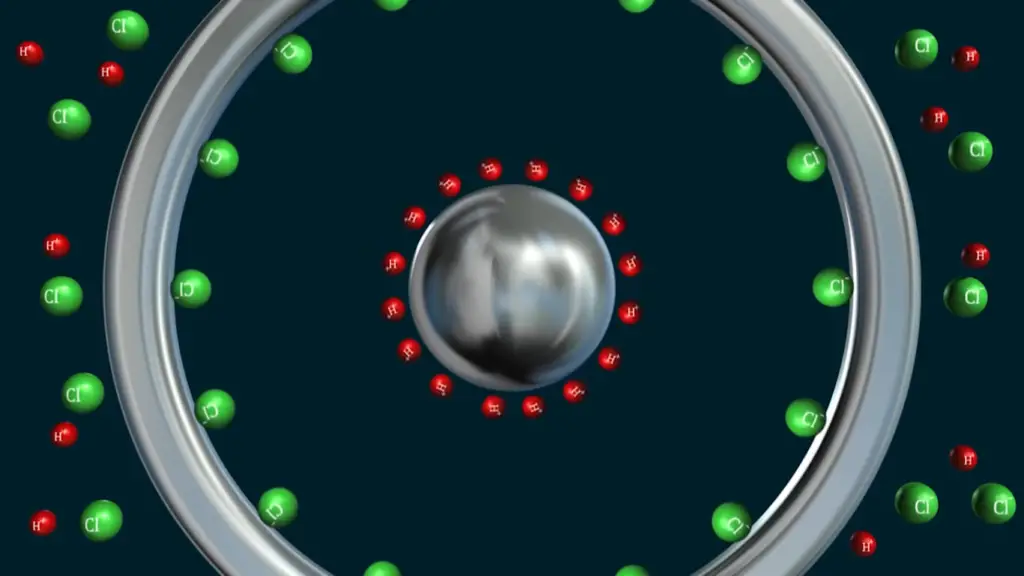
Dietary Sources of Calcium
To maintain adequate calcium levels, it’s essential to consume a balanced diet that includes good sources of this mineral. Dairy products such as milk, cheese, and yogurt are well-known for their calcium content. However, other sources include leafy green vegetables (e.g., kale, broccoli), fortified plant-based milk alternatives, nuts, seeds, and fish with edible bones (e.g., canned salmon, sardines).
Properties of Calcium:
1) Physical Properties:
- Appearance: Calcium is a silvery-white metal with a shiny surface when freshly cut. However, it quickly tarnishes when exposed to air, forming a dull oxide layer;
- Density and Melting Point: Calcium is a relatively lightweight metal with a density of approximately 1.55 g/cm³. It has a moderately low melting point of 842°C (1548°F), making it malleable and easy to work with in certain industrial applications;
- Solubility: In its pure elemental form, calcium is not soluble in water. However, it readily reacts with water and acids to form various compounds;
- Reactivity: Calcium is a highly reactive metal, ranking fifth in reactivity among all elements. It reacts vigorously with water to produce calcium hydroxide and hydrogen gas. When exposed to air, it forms a layer of calcium oxide and calcium nitride, protecting the metal from further corrosion;
- Electrical Conductivity: As a metal, calcium is an excellent conductor of electricity due to the mobility of its electrons within the crystal lattice;
- Isotopes: Calcium has several isotopes, with Calcium-40 being the most abundant (about 97% of naturally occurring calcium). Other isotopes include Calcium-42, Calcium-43, Calcium-44, Calcium-46, and Calcium-48 [2];
2) Chemical Properties:
- Reactivity with Water and Acids: Calcium reacts vigorously with water, producing calcium hydroxide (Ca(OH)₂) and hydrogen gas (H₂). When combined with acids, such as hydrochloric acid (HCl), it forms calcium chloride (CaCl₂) and hydrogen gas;
- Oxidation: Calcium readily reacts with oxygen (O₂) in the air to form calcium oxide (CaO), also known as quicklime. This reaction is exothermic and contributes to the protective oxide layer that prevents further corrosion;
- Formation of Compounds: Calcium forms various compounds with other elements due to its high reactivity. Some important compounds include calcium carbonate (CaCO₃), found in limestone and marble; calcium phosphate (Ca₃(PO₄)₂), a crucial component of bones and teeth; and calcium sulfate (CaSO₄), commonly known as gypsum;
- Biological Importance: Calcium is vital for living organisms, playing a crucial role in processes like muscle contraction, nerve transmission, blood clotting, and cell signaling. It is also an essential element in plant nutrition, contributing to cell wall strength and facilitating nutrient uptake;
- Flame Test: When calcium compounds are heated in a flame, they produce an orange-red color, which serves as a characteristic flame test for the presence of calcium;
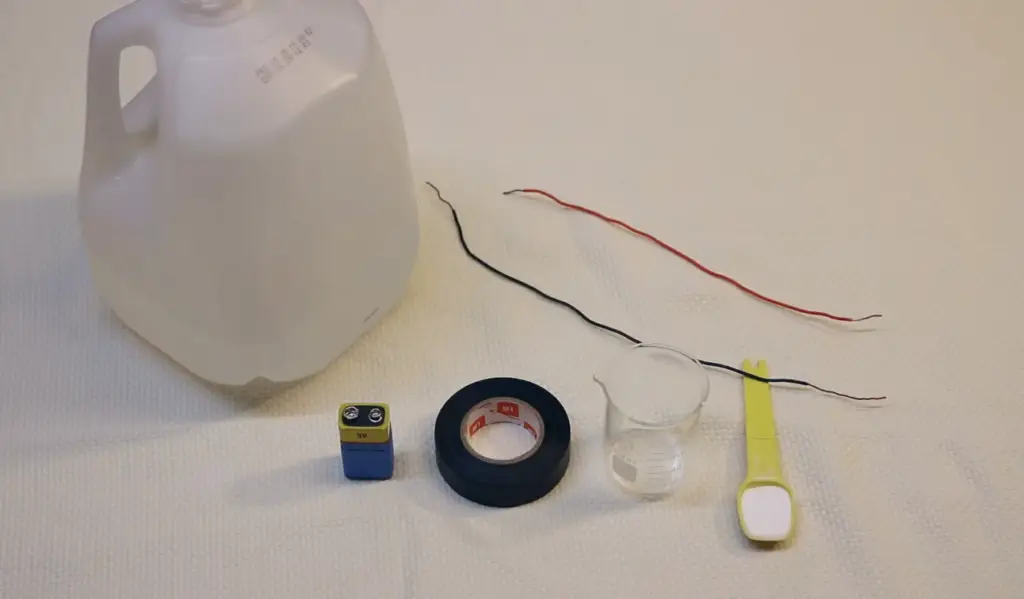
Uses of Calcium:
Building and Construction
Calcium-based materials like limestone, marble, and gypsum are widely used in the construction industry. Limestone is a primary component in cement production, while marble is utilized for decorative purposes. Gypsum, in the form of plaster and drywall, is essential for creating interior walls and ceilings in buildings.
Metallurgy
Calcium is employed as an alloying agent in the production of various metals, including aluminum, copper, and lead. These calcium alloys enhance the strength, hardness, and corrosion resistance of the metals, making them suitable for diverse applications.
Agriculture
Calcium plays a vital role in agriculture, primarily as a nutrient for plants. It is used in the form of calcium-containing fertilizers to improve soil quality and promote plant growth. Calcium helps maintain the structural integrity of cell walls in plants, reducing the risk of diseases and enhancing overall crop yield.
Water Treatment
Calcium hydroxide, also known as slaked lime, is utilized in water treatment processes. It helps to adjust the pH of water and acts as a coagulant to remove impurities by flocculation. Additionally, calcium hypochlorite is used as a disinfectant and sanitizer in water purification.
Steel Production
In the steel industry, calcium is used to remove impurities like sulfur, oxygen, and other non-metallic inclusions from molten steel. The addition of calcium helps improve the mechanical properties and quality of the final steel product.
Pharmaceuticals
Calcium supplements are commonly prescribed to individuals with calcium deficiencies or conditions like osteoporosis. Calcium carbonate and calcium citrate are popular forms of calcium supplements, aiding in bone health and preventing osteoporosis-related fractures.

Food and Beverages
Calcium is an essential nutrient for the human body, crucial for maintaining strong bones and teeth, and for various physiological functions. Dairy products, fortified plant-based milk, and certain vegetables are common dietary sources of calcium.
Personal Care Products
Calcium compounds are used in personal care products like toothpaste, where calcium carbonate acts as an abrasive for removing plaque and food particles from teeth surfaces.
Fireworks and Pyrotechnics
Calcium salts, such as calcium chloride and calcium sulfate, are used in fireworks to produce vibrant colors when they burn. Calcium produces orange-red hues, adding visual appeal to fireworks displays.
Animal Feed
Calcium is an essential mineral for livestock and poultry. Calcium carbonate or calcium phosphate is often added to animal feed to ensure proper bone development and overall health in the animals.
Occurrence and Abundance of Calcium
1) Earth’s Crust
Calcium is the fifth most abundant element in the Earth’s crust, comprising approximately 3% by mass. It is present in a wide range of minerals, with calcium carbonate (CaCO₃) being one of the most common compounds. Limestone, chalk, and marble are examples of calcium carbonate-rich rocks. Calcium also occurs in various silicate minerals, such as feldspars and micas.

2) Oceans
Calcium is dissolved in seawater, making the world’s oceans a significant reservoir of this mineral. The concentration of dissolved calcium ions in seawater is relatively stable, typically around 400 to 420 parts per million (ppm).
3) Living Organisms
Calcium is an essential element for living organisms, and it is widely distributed in plants and animals. In animals, it is a key component of bones, teeth, and shells, providing structural support and protection. Many marine organisms, such as corals, mollusks, and certain algae, incorporate calcium carbonate into their skeletal structures.
4) Soil and Sediments
Calcium is abundant in soil, where it plays a crucial role in supporting plant growth. It is released into the soil through the weathering of rocks and minerals containing calcium. Over time, calcium-rich minerals break down, and the released calcium becomes available for plant uptake.
5) Cosmic Abundance
Calcium has a significant presence in the universe, although it is not as abundant as elements like hydrogen, helium, oxygen, and carbon. It is formed through nuclear fusion processes in stars and is released into space when stars undergo supernova explosions.
6) Human Body
Calcium is a major component of the human body, constituting about 1-2% of an adult’s total body weight. Approximately 99% of the body’s calcium is stored in bones and teeth, providing structural support. The remaining 1% is present in bodily fluids and soft tissues, where it is vital for various physiological processes [3].

Is Calcium Conductive:
Does Calcium Conduct Electricity?
In its pure elemental form, calcium is indeed conductive. As a metal, it contains free electrons within its crystal lattice, allowing for the flow of electrical charges. However, metallic calcium is not commonly encountered in everyday life due to its high reactivity with air and moisture. Instead, calcium is typically found in various compounds and is often incorporated into minerals and biological structures.
What Is the Conductivity of Calcium?
The electrical conductivity of calcium varies depending on its state and form. Metallic calcium exhibits high electrical conductivity due to the presence of free electrons that can move freely and carry electric charges. However, the practical applications of metallic calcium are limited due to its reactivity and tendency to form compounds.
Is Calcium a Bad Conductor?
In the context of calcium compounds and minerals, calcium is considered a bad conductor of electricity. This is because when calcium combines with other elements to form compounds, the structure of the compound may not allow for the easy flow of electrons. In most cases, the electrons are tightly bound within the compound’s molecular structure, hindering their movement and reducing the material’s electrical conductivity.
For instance, in calcium carbonate (CaCO₃), the carbon and oxygen atoms form covalent bonds with each other, creating a stable molecular structure. The calcium ions are held in place within this structure, and the electrons are not free to move, resulting in low electrical conductivity.
Does Calcium Increase Conductivity?
While calcium itself may not significantly increase electrical conductivity in most cases, its presence can influence the overall conductivity of certain materials and substances. For example:
- Water: Pure water is a poor conductor of electricity. However, when water contains dissolved ions, such as calcium ions (Ca²⁺) and other electrolytes, its conductivity increases significantly. Calcium ions, along with other ions like sodium and magnesium, contribute to the conductivity of water;
- Biological Fluids: In the human body, calcium ions play a crucial role in nerve impulse transmission and muscle contraction. The movement of calcium ions across cell membranes creates electrical signals, enabling communication between nerve cells and the contraction of muscle fibers;
- Soil: In agricultural settings, the presence of calcium in soil can affect its electrical conductivity. Soils with higher calcium content may have higher conductivity, which can influence nutrient availability and plant growth;
- Concrete: Calcium-based materials, like cement and concrete, have low electrical conductivity. However, the presence of additives or the incorporation of other conductive materials in concrete can enhance its overall conductivity for specialized applications;
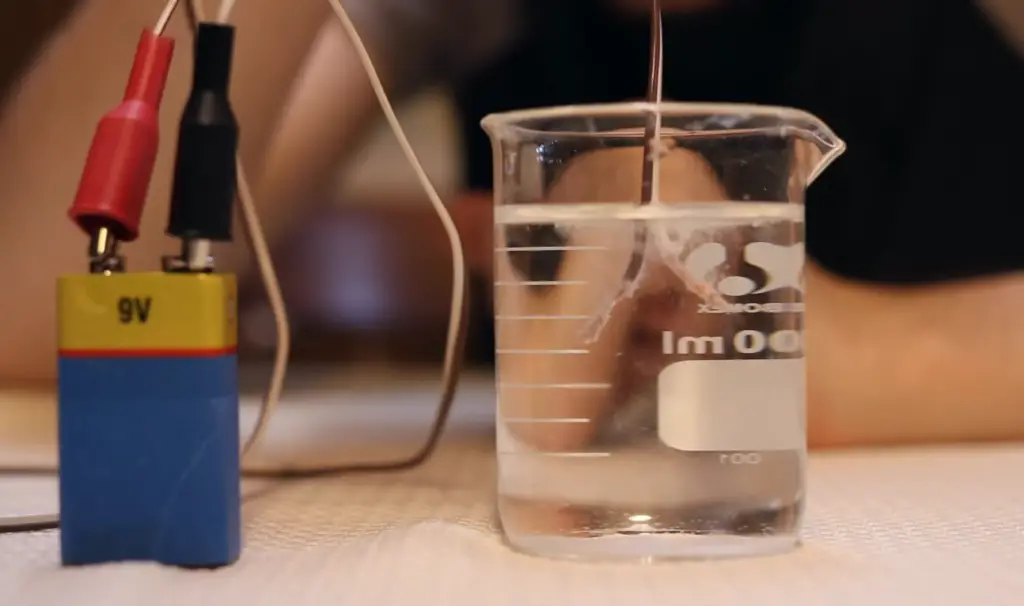
The Unsuitability of Calcium for Wiring
Calcium, in its pure elemental form, is unsuitable for use as wiring material in electrical applications. While calcium is conductive as a metal due to the presence of free electrons, several factors make it impractical and unsuitable for wiring purposes.
Here are some of the key reasons why calcium is not used as a wiring material:
- Reactivity and Corrosion: One of the main challenges with metallic calcium is its high reactivity with air and moisture. When exposed to atmospheric conditions, calcium rapidly forms a layer of calcium oxide (CaO) and calcium nitride (Ca₃N₂) on its surface. This oxide layer acts as a protective barrier, preventing further reaction with air. However, it also hinders the efficient flow of electrical current and can lead to poor conductivity;
- Brittleness: Pure calcium is a relatively soft and brittle metal. This brittleness makes it prone to cracking and fracturing when subjected to mechanical stress. In wiring applications, flexibility and durability are essential properties, which calcium lacks due to its brittleness;
- Availability and Cost: Obtaining metallic calcium in its pure form is challenging and not cost-effective. Calcium is primarily produced commercially by the electrolysis of calcium chloride (CaCl₂), but this process is energy-intensive and expensive. As a result, the use of calcium as a wiring material is not practical from a cost perspective;
- Fire Hazard: Calcium is highly reactive with water, releasing hydrogen gas and generating heat. In the presence of moisture or water, it can lead to potential fire hazards, making it unsuitable for applications where exposure to moisture is likely;
- Alternatives: Several other metals and alloys are much better suited for wiring applications. Copper, aluminum, and various copper alloys (e.g., copper-nickel) are commonly used for electrical wiring due to their excellent conductivity, mechanical properties, and resistance to corrosion;
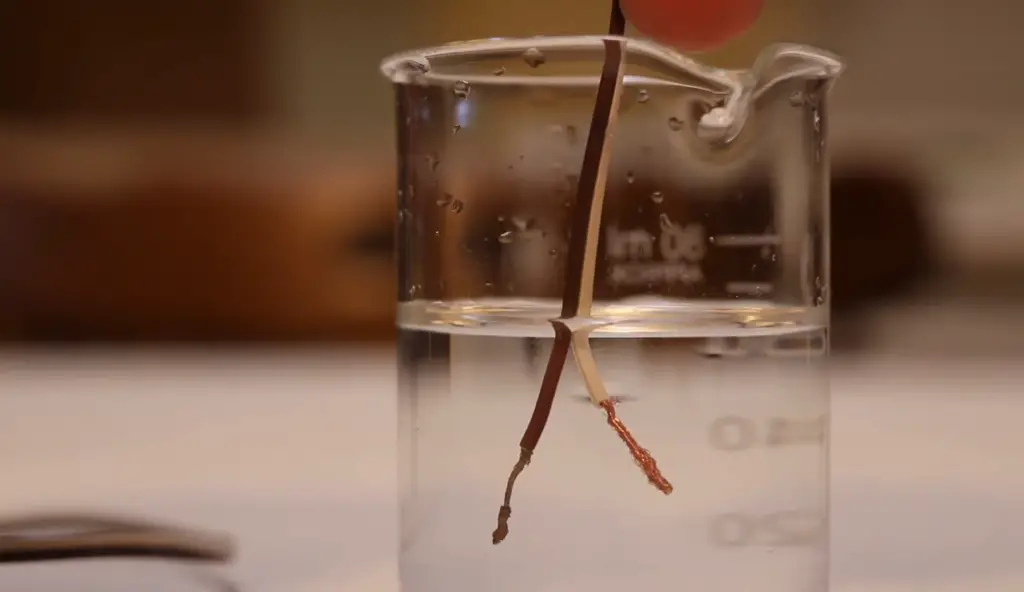
Calcium’s Electrical Conductance Compared:
Calcium vs. Copper and Aluminum:
- Conductivity Comparison: Copper and aluminum are renowned for their exceptional electrical conductivity, making them ideal materials for electrical wiring and transmission of electricity. Copper, in particular, is the standard choice for electrical conductors due to its high conductivity, low resistance, and reliability. Aluminum, while slightly less conductive than copper, is still widely used for electrical transmission due to its lighter weight and cost-effectiveness;
- Calcium’s Unsuitability for Wiring: As we discussed in a previous article, metallic calcium is reactive with air and moisture, leading to the formation of oxide and nitride layers on its surface. This hinders the efficient flow of electrical current and makes calcium unsuitable for use as a wiring material. Copper and aluminum, on the other hand, do not suffer from this reactivity issue, making them excellent choices for electrical conductors;
- Applications: Copper is commonly used in electrical wiring, power generation, and transmission of electricity, while aluminum finds application in power lines, overhead cables, and conductors where weight considerations are important [4];
Calcium vs. Potassium
Conductivity Comparison
Potassium is a highly reactive metal and exhibits conductive properties similar to calcium in its metallic form. However, like calcium, potassium’s high reactivity with moisture and air limits its practical use as an electrical conductor.
Potassium in Biological Systems
Calcium vs. Sodium Chloride:
- Conductivity Comparison: Sodium chloride, commonly known as table salt, is an ionic compound composed of sodium (Na⁺) and chloride (Cl⁻) ions. While calcium in its metallic form is conductive, sodium chloride, as a compound, is not conductive in its solid state. However, when dissolved in water, it dissociates into sodium and chloride ions, becoming an excellent conductor of electricity due to the mobility of these ions;
- Applications: The electrical conductivity of sodium chloride when dissolved in water is the basis for the functioning of electrolytes in the human body, supporting nerve impulses and muscle contractions;
Calcium vs. Other Transition Metals:
- Conductivity Comparison: Transition metals, such as iron, nickel, and titanium, generally exhibit good electrical conductivity due to their partially filled d-orbitals. While calcium is a transition metal, its electrical conductivity is not as high as those of conventional electrical conductors like copper and aluminum;
- Applications: Transition metals find applications in various fields, including electrical engineering, electronics, and construction. Copper, for example, is used in electrical wires, while nickel is employed in battery electrodes and electrical contacts [5];
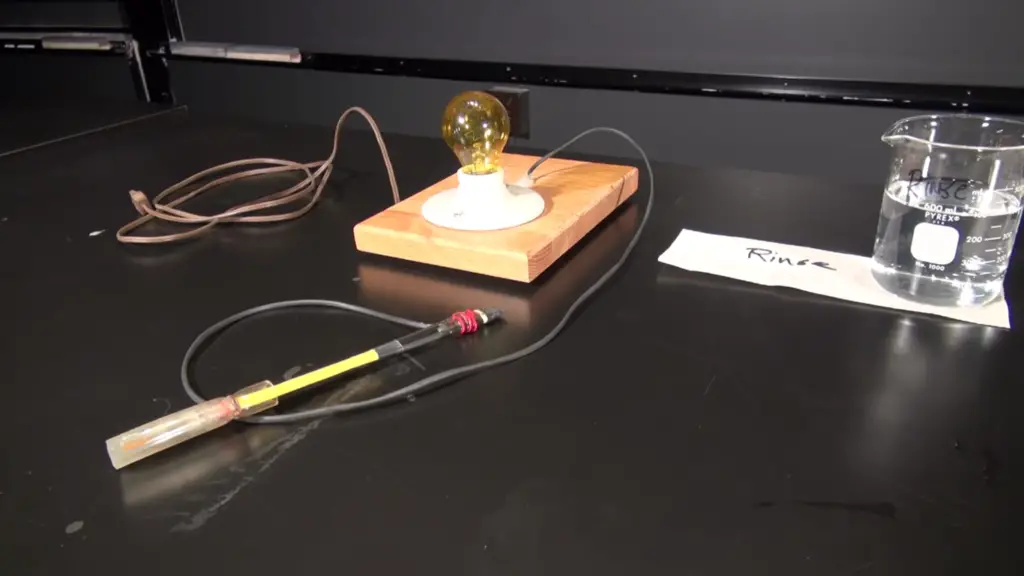
FAQ:
1. Does the conductivity of calcium vary with temperature?
Yes, the conductivity of calcium, like most materials, does vary with temperature. Generally, the electrical conductivity of metals decreases with an increase in temperature due to the greater scattering of electrons. As the temperature rises, thermal energy causes lattice vibrations, which disrupt the movement of free electrons, leading to a decrease in conductivity.
2. What is the electrical resistivity of calcium?
The electrical resistivity of calcium at room temperature is approximately 3.91 microohm-cm (microohm-centimeter). Resistivity is a measure of how strongly a material opposes the flow of electric current. A low resistivity value indicates good electrical conductivity [6].
3. Why is calcium a poor electrical conductor compared to copper?
Calcium is a poor electrical conductor compared to copper primarily due to its atomic structure and the number of free electrons available for conducting electricity. Copper has a single valence electron in its outermost shell, which is relatively loosely bound and can easily move through the metal’s crystal lattice, contributing to its high electrical conductivity. In contrast, calcium has two valence electrons, which are more tightly bound, resulting in fewer mobile electrons and lower electrical conductivity.
4. Is calcium hydroxide a good conductor of electricity?
No, calcium hydroxide (Ca(OH)₂) is not a good conductor of electricity. It is an ionic compound formed by the reaction of calcium oxide (CaO) with water, and in its solid state, it does not conduct electricity. Ionic compounds like calcium hydroxide do not have free electrons for conducting electricity. However, when dissolved in water, it dissociates into calcium ions (Ca²⁺) and hydroxide ions (OH⁻), making the solution conductive.
5. Why does calcium conduct electricity?
In its metallic form, calcium conducts electricity due to the presence of free electrons within its crystal lattice. These free electrons are mobile and can move easily through the metal, allowing for the flow of electric current.
6. What is the electrical conductivity of calcium?
The electrical conductivity of calcium at room temperature is approximately 29.8 x 10⁶ Siemens/meter. This value indicates the ability of calcium to conduct electricity [7].
7. What makes calcium a good conductor?
Calcium’s ability to conduct electricity comes from its metallic bonding. In metals, atoms share a sea of delocalized electrons, which are not bound to any specific atom and are free to move throughout the metal’s structure. This delocalized electron cloud allows for the easy flow of electric current, making calcium a good conductor in its metallic form.
8. Does calcium react with electricity?
Pure metallic calcium does not react with electricity. However, metallic calcium is not commonly encountered due to its high reactivity with air and moisture, which leads to the formation of protective oxide layers on its surface. The oxide layer hinders the efficient flow of electric current, making calcium unsuitable for many electrical applications.
9. Is calcium conductive in water?
Pure metallic calcium is non-conductive in water due to the formation of an oxide layer on its surface, hindering electron flow. However, when calcium is dissolved in water, it forms calcium ions (Ca²⁺), which can contribute to the electrical conductivity of the solution.
10. Is calcium a conductor, semiconductor, or insulator?
Calcium is a conductor in its metallic form, where it exhibits good electrical conductivity due to the presence of free electrons. However, in its compound form, such as calcium oxide (CaO) or calcium carbonate (CaCO₃), it acts as an insulator and does not conduct electricity.
11. Is calcium a good conductor of heat and electricity?
In its metallic form, calcium is a good conductor of both heat and electricity due to the mobility of free electrons. However, as a compound, calcium generally exhibits poor electrical conductivity and is an insulator.
12. Is calcium a bad conductor of heat?
In its metallic form, calcium is a good conductor of heat due to the movement of free electrons that can carry thermal energy throughout the material. However, its reactivity with air and moisture limits its practical use in heat conduction applications.
13. How much conductivity does calcium have?
As mentioned earlier, the electrical conductivity of calcium at room temperature is approximately 29.8 x 10⁶ Siemens/meter.
14. Does calcium conduct electricity as a liquid?
No, pure calcium as a liquid does not conduct electricity since it is not in its metallic form. Additionally, obtaining calcium in a liquid state is challenging due to its high melting point and reactivity.
15. Is calcium electrically neutral?
In its elemental form, calcium is neutral, as it has the same number of protons and electrons, resulting in a balanced charge. However, when it forms ions, such as calcium ions (Ca²⁺), it carries an electrical charge.
16. Does calcium affect the conductivity of water?
When calcium dissolves in water, it forms calcium ions (Ca²⁺) and contributes to the conductivity of the water. However, the presence of dissolved calcium does not significantly affect the conductivity of pure water, as water itself is a poor conductor of electricity.
17. Do bones conduct electricity?
Bones are poor conductors of electricity due to their mineralized structure, which limits the movement of electrons. However, the fluid and tissue surrounding bones can conduct electricity to some extent.
18. Is calcium an explosive?
No, calcium in its pure elemental form is not explosive. However, when combined with certain elements or compounds, calcium can form explosive mixtures.
19. Is CaCl2 conductive in water?
Yes, calcium chloride (CaCl₂) is conductive when dissolved in water. It dissociates into calcium ions (Ca²⁺) and chloride ions (Cl⁻), which are free to move and conduct electricity.
20. Is calcium a cathode or anode?
In electrochemical reactions, the role of calcium as a cathode or anode depends on the specific setup and conditions of the system. As a metal, calcium can serve as either a cathode (reduction) or anode (oxidation) depending on the specific redox reaction taking place.
21. What happens if calcium is high in water?
If calcium levels are high in water, it can lead to “hard water”. Hard water contains elevated levels of dissolved calcium and magnesium ions. While hard water is not harmful to health, it can cause scaling and mineral deposits in pipes and appliances, reducing their efficiency.
22. Can solid calcium oxide conduct electricity?
No, solid calcium oxide (CaO), commonly known as lime, is an ionic compound and is not a good conductor of electricity. In its solid state, the ions are held in place and cannot move freely to conduct electricity.
23. Why does CaSO4 not conduct electricity?
Calcium sulfate (CaSO₄) is an ionic compound, and in its solid state, it does not conduct electricity. Similar to other ionic compounds, the ions are not free to move within the solid structure, leading to poor electrical conductivity.
24. What is the most conductive element?
Silver (Ag) is the most conductive element, boasting the highest electrical and thermal conductivity among all elements. This exceptional conductivity is why silver is often used in specialized electrical applications, such as electrical contacts and high-performance connectors.
25. What is the least conductive metal?
Bismuth (Bi) is the least conductive metal among the elements. It has relatively high electrical resistance compared to other metals, making it a poor electrical conductor. This property is utilized in certain applications, such as in thermal expansion-based safety devices.
Useful Video: Is CaCO3 (Calcium carbonate ) an Electrolyte or Non-Electrolyte?
References
- https://chemistrydictionary.org/calcium
- https://www.circuitsgallery.com/is-calcium-conductive/
- https://lambdageeks.com/does-calcium-conduct-electricity/
- https://en.wikipedia.org/wiki/Calcium
- https://toolsweek.com/is-calcium-a-good-conductor-of-electricity/
- https://chemistry.stackexchange.com/questions/158341/why-is-copper-a-better-conductor-of-electricity-than-calcium
- https://sciencestruck.com/properties-of-calcium-chloride





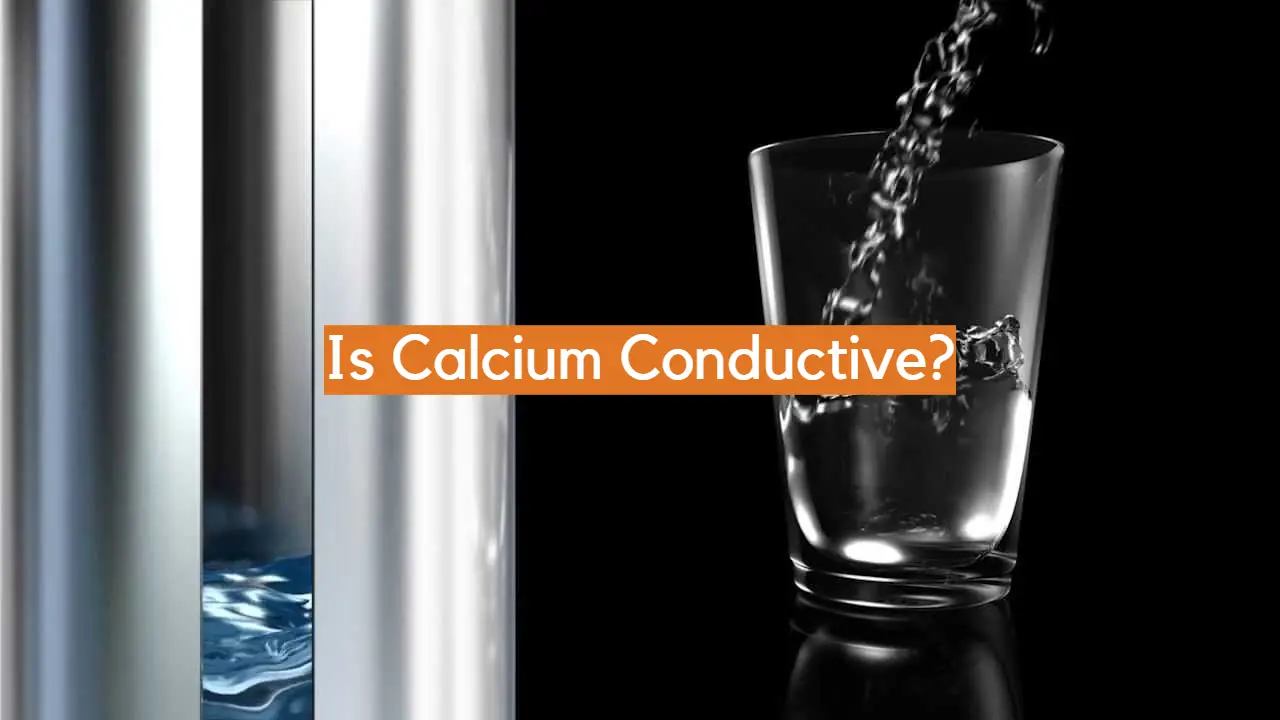








Leave a Reply